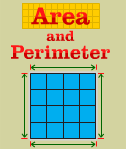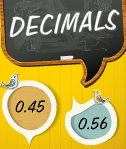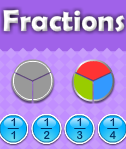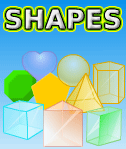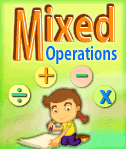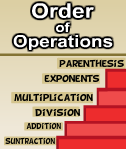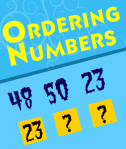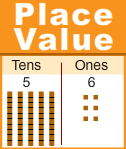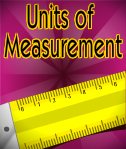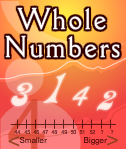- HOME
- QUIZZES
- FOURTH GRADE
- MATH
Math Problems for 4th graders
Essential Math Problems for 4th Graders
Fourth grade is a pivotal time for mathematical knowledge. Students are mastering the skills they will need for more complex math in their future. Ensuring their quick recall of basic facts and working on their complex problem-solving skills will be essential this year.
Working with online quizzes can help students to ensure they understand the concepts taught in the classroom. Working online with Turtle Diary can help students see their strengths and weaknesses.
Working with online quizzes can help students to ensure they understand the concepts taught in the classroom. Working online with Turtle Diary can help students see their strengths and weaknesses.
What Math Should a 4th Grader Know?
Lines & Rays
Students will need to know how to work with line segments. Those line segments will join to form angles. Types of lines, like parallel, perpendicular, and intersecting, will need to be identified before they can use them in more complex problem areas.
Identification & Estimation of Angles
Types of angles, such as acute, right, and obtuse, and the most common degrees within a circle will be introduced. Students will practice identifying them through the quizzes. They will then be able to estimate angles based on their comprehension of the basic types. Learning how these angles show up in everyday life will make it more real-world applicable for them.
Area & Perimeter
Working with quadrilaterals, students will practice calculating perimeter, the distance around the outside of a shape. They will use real-world examples to calculate within word problems which will make it more relevant to them.
Using multiplication skills, they will move on to calculating area. This will enable them to work with more complex problem solving skills. Seeing how area and perimeter are related, especially when it comes to architecture or cartography can help students see its utility.
Students will need to know how to work with line segments. Those line segments will join to form angles. Types of lines, like parallel, perpendicular, and intersecting, will need to be identified before they can use them in more complex problem areas.
Identification & Estimation of Angles
Types of angles, such as acute, right, and obtuse, and the most common degrees within a circle will be introduced. Students will practice identifying them through the quizzes. They will then be able to estimate angles based on their comprehension of the basic types. Learning how these angles show up in everyday life will make it more real-world applicable for them.
Area & Perimeter
Working with quadrilaterals, students will practice calculating perimeter, the distance around the outside of a shape. They will use real-world examples to calculate within word problems which will make it more relevant to them.
Using multiplication skills, they will move on to calculating area. This will enable them to work with more complex problem solving skills. Seeing how area and perimeter are related, especially when it comes to architecture or cartography can help students see its utility.
Visualizing & Number Lines
Students must be able to visualize the concept and how it relates to their prior knowledge of fractions. Using infographics and charts, students will learn to “see” the decimal first in order to properly grasp the concept.
Using number lines will often help students to see where the decimals fall in relation to whole numbers. It will also help with ordering skills and how to compare them to other decimals. Then when they need to add and subtract decimals, it can be visualized on the number line.
Place Values & Words
Students will need to learn the proper terminology for place values below zero. Very similar, they will simply reverse what they learned while adding the “ths” suffix. For example, instead of tens, hundreds, and thousands, they will use tenths, hundredths, and thousandths.
They will also work with expanded form and learn to say and write the complete numbers out loud. This is an essential skill for writing checks in their future. It is a great real-world reason to explain to students the need for this particular skill.
Converting & Comparing Fractions & Decimals
4th graders should already know basic fraction and decimal conversions, such as one-half being equal to 0.5 and one-fourth being 0.25. They will begin to work with mixed numbers this year. They will need to change them into both fraction and decimal format.
Basic Operations with Decimals
Adding and subtracting decimals is a bit trickier than usual numbers because you must always line up the decimal point. It is helpful to add zeros into the problem so that students can properly visualize how they are adding or subtracting. This will take increased practice for students over time.
Thinking of decimals in terms of money often helps students to see the usefulness of this process. Everyone uses money and should be able to estimate and calculate the costs or loss from transactions.
Students must be able to visualize the concept and how it relates to their prior knowledge of fractions. Using infographics and charts, students will learn to “see” the decimal first in order to properly grasp the concept.
Using number lines will often help students to see where the decimals fall in relation to whole numbers. It will also help with ordering skills and how to compare them to other decimals. Then when they need to add and subtract decimals, it can be visualized on the number line.
Place Values & Words
Students will need to learn the proper terminology for place values below zero. Very similar, they will simply reverse what they learned while adding the “ths” suffix. For example, instead of tens, hundreds, and thousands, they will use tenths, hundredths, and thousandths.
They will also work with expanded form and learn to say and write the complete numbers out loud. This is an essential skill for writing checks in their future. It is a great real-world reason to explain to students the need for this particular skill.
Converting & Comparing Fractions & Decimals
4th graders should already know basic fraction and decimal conversions, such as one-half being equal to 0.5 and one-fourth being 0.25. They will begin to work with mixed numbers this year. They will need to change them into both fraction and decimal format.
Basic Operations with Decimals
Adding and subtracting decimals is a bit trickier than usual numbers because you must always line up the decimal point. It is helpful to add zeros into the problem so that students can properly visualize how they are adding or subtracting. This will take increased practice for students over time.
Thinking of decimals in terms of money often helps students to see the usefulness of this process. Everyone uses money and should be able to estimate and calculate the costs or loss from transactions.
Long division will be introduced later this year. Students will need to have a strong basis of basic operations in order to have success with this complex concept. Working with one-digit numbers will help students see that the quotient is the same as the dividend.
Once this clicks, it will be easier to manipulate the numbers. They will also learn to maneuver among the division properties. They will understand which numbers belong in which location in division sentences and how factors play into the overall structure.
Once this clicks, it will be easier to manipulate the numbers. They will also learn to maneuver among the division properties. They will understand which numbers belong in which location in division sentences and how factors play into the overall structure.
Equivalent fractions should be mastered this year, and using visuals will help students to see this concept. They will begin with benchmark fractions and move from there into more complex numbers. This will help them in ordering fractions and comparing them in a variety of problems.
Fractions of a number will also be used, as students will essentially create mixed numbers in order to solve this concept. Students will use the number line to help them move up and down to solve the facts. Students will have a more kinesthetic and visual approach to maneuvering and working with the numbers.
Multiplication of fractions will be a skill mastered this year as well. Students will work with visuals and breakdowns of the numbers to help them see the problems. They will also be working with proper and improper fractions as well as mixed numbers. Successfully finding equivalents will help students to move on to more difficult concepts.
Fractions of a number will also be used, as students will essentially create mixed numbers in order to solve this concept. Students will use the number line to help them move up and down to solve the facts. Students will have a more kinesthetic and visual approach to maneuvering and working with the numbers.
Multiplication of fractions will be a skill mastered this year as well. Students will work with visuals and breakdowns of the numbers to help them see the problems. They will also be working with proper and improper fractions as well as mixed numbers. Successfully finding equivalents will help students to move on to more difficult concepts.
Students will begin to work with more complex polygons, learning how to calculate their angles and identify their properties. Classification of triangles will also be a focus. Students will calculate missing angles knowing that all interior angles should total 180 degrees.
Lines of Symmetry will be another concept used this year. Students will identify polygons by lines of symmetry as an element of classification. Working on dividing them and seeing how many they can find can be a particularly fun lesson.
They will also work with circles, a unique shape that adds up to 360 degrees and has unlimited lines of symmetry. Using formulas unique to circles, students will learn to calculate perimeter and area using π (pi).
Lines of Symmetry will be another concept used this year. Students will identify polygons by lines of symmetry as an element of classification. Working on dividing them and seeing how many they can find can be a particularly fun lesson.
They will also work with circles, a unique shape that adds up to 360 degrees and has unlimited lines of symmetry. Using formulas unique to circles, students will learn to calculate perimeter and area using π (pi).
Working with Input/Output tables will help students see the relationship between equations and graphing on an X/Y axis. Once students learn to calculate numbers, they will be able to properly graph their functions and compare graphing relationships.
One real-world skill that is essential and relevant to every student is how to use money. Students should know how to make change as well as estimate costs. When working with units, they can use their multiplication skills to calculate larger orders and receipts.
Basic multiplication skills should already be mastered by this point. Students will begin early algebraic concepts with inequalities involving multiplication. Students can view this as more of a riddle or brain puzzle that they must solve which will keep them interested.
Students will learn how to solve problems with multiple steps and operations required. Knowing how to use the acronym PEMDAS for order of operations will help students correctly solve problems. The correct order to solve problems is Parentheses, Exponents, Multiplication, Division, Addition, and Subtraction.
Students should be able to properly compare whole numbers up to the one-billion mark. This means knowing the names of all place values up to that point. They will also be expected to convert numbers from one place value to another. It’s a great opportunity to incorporate money math.
Equivalent fractions should be mastered this year, and using visuals will help students to see this concept. They will begin with benchmark fractions and move from there into more complex numbers. This will help them in ordering fractions and comparing them in a variety of problems.
Fractions of a number will also be used, as students will essentially create mixed numbers in order to solve this concept. Students will use the number line to help them move up and down to solve the facts. Students will have a more kinesthetic and visual approach to maneuvering and working with the numbers.
Multiplication of fractions will be a skill mastered this year as well. Students will work with visuals and breakdowns of the numbers to help them see the problems. They will also be working with proper and improper fractions as well as mixed numbers. Successfully finding equivalents will help students to move on to more difficult concepts.
Fractions of a number will also be used, as students will essentially create mixed numbers in order to solve this concept. Students will use the number line to help them move up and down to solve the facts. Students will have a more kinesthetic and visual approach to maneuvering and working with the numbers.
Multiplication of fractions will be a skill mastered this year as well. Students will work with visuals and breakdowns of the numbers to help them see the problems. They will also be working with proper and improper fractions as well as mixed numbers. Successfully finding equivalents will help students to move on to more difficult concepts.
Temperature
Working with celsius and fahrenheit, students will learn reasonable temperatures for a variety of things in the world.
Time
Students will learn how to manipulate and calculate lengths and units of time, including converting units of time. They will also learn what time zones are and how they differ.
Calendar
Students should be able to identify all elements of a calendar. They will use it to identify dates and calculate periods of time.
Working with celsius and fahrenheit, students will learn reasonable temperatures for a variety of things in the world.
Time
Students will learn how to manipulate and calculate lengths and units of time, including converting units of time. They will also learn what time zones are and how they differ.
Calendar
Students should be able to identify all elements of a calendar. They will use it to identify dates and calculate periods of time.
How Do Turtle Diary’s Math Questions for 4th Graders Help Them Master Math Skills?
Skill-Specific Quizzes
Turtle Diary offers a variety of skill areas with specific quizzes under each one. Everything a fourth grader needs to know can be found on Turtle Diary with multiple opportunities to practice under each one. In addition, the quizzes can be taken either online or downloaded for easy, on-the-go practice.
Real-World Scenarios
Using math in real life should be paramount in the classroom, but often these situations are overlooked. Turtle Diary’s quizzes refocus the necessary skills into real-world scenarios. Students can understand the “why” behind the need for mathematical learning.
We take into account the need for quantification. Your scores will show up online so that you can monitor your progress.
Turtle Diary offers the opportunity to practice in a low-pressure environment with targeted skill areas. Real-world scenarios will help to train your 4th grader to remove the anxiety of a problem. They can then reprocess it with a new understanding of mathematical concepts to help them find success.
We take into account the need for quantification. Your scores will show up online so that you can monitor your progress.
Turtle Diary offers the opportunity to practice in a low-pressure environment with targeted skill areas. Real-world scenarios will help to train your 4th grader to remove the anxiety of a problem. They can then reprocess it with a new understanding of mathematical concepts to help them find success.



